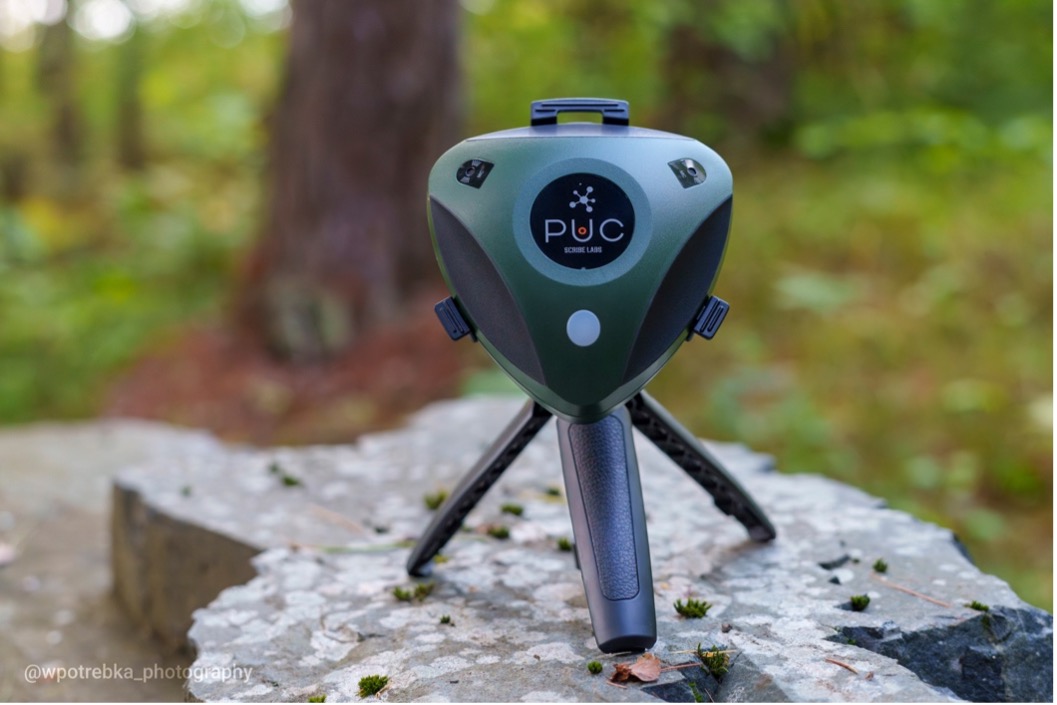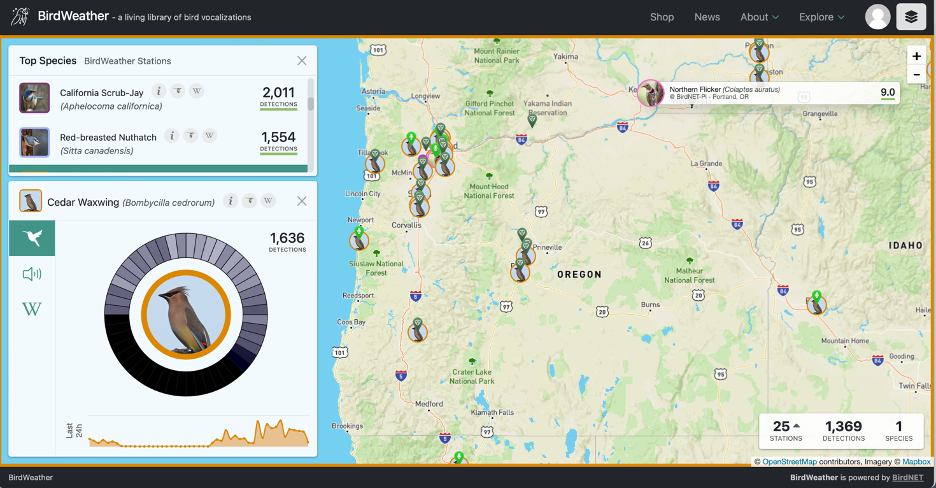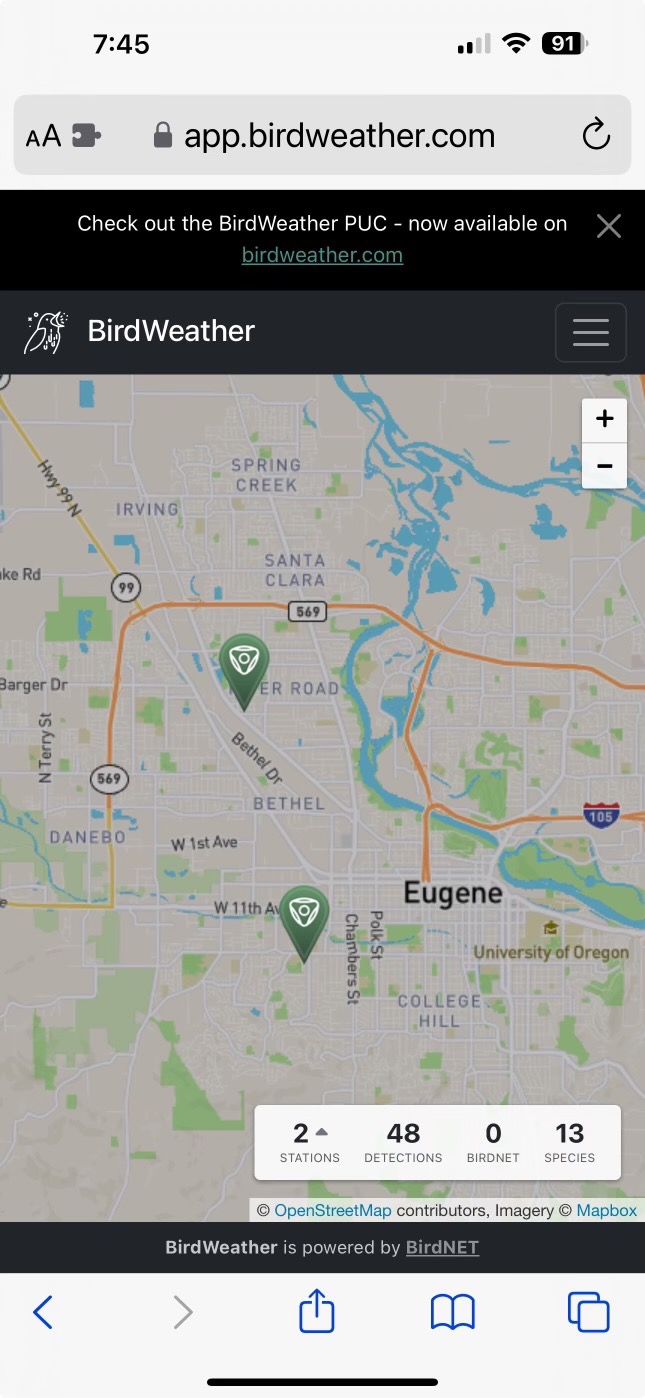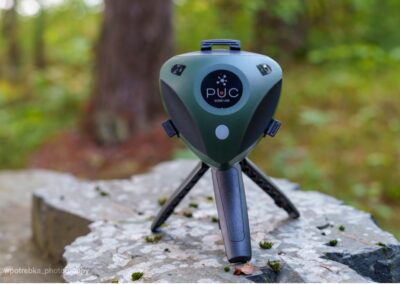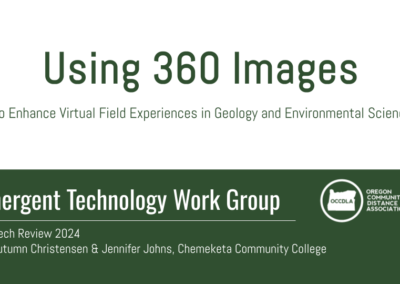EMERGENT TECHNOLOGY WORK GROUP - ED TECH REVIEWS
Bird Monitoring with Automated Acoustic Recorders
by Colin Phifer
Biology Instructor
Lane Community College
Sep 27th, 2024
Picture of the PUC with stand. (Copyright BirdWeather)
Project Overview and Outcomes
The purpose of this grant was to increase undergraduate research opportunities for online and in-person students enrolled in Biology 103 Birds of Oregon courses.
For this project, Lane Community College was awarded six small, portable autonomous bird recorders, called PUCS, that were developed by BirdWeather (https://www.birdweather.com). These units listen and automatically identify bird species based upon their songs and calls.
The recorders use BirdNET (https://birdnet.cornell.edu), an artificial neural network, that can categorize bird vocalizations. Cornell University and Chemnitz University of Technology developed the BirdNET software that powers the species identification.
Download the Transcript for this podcast.
Bird recordings captured by students
View recordings of different bird species identified in the LCC Forest.
The six BirdWeather PUCs were successfully integrated into the Biology 103 Birds of Oregon course as a pilot project, benefiting both online and in-person students. Place-based datasets of bird species were generated and used in biodiversity-based labs comparing species list. These devices enhanced our ability to conduct undergraduate research by providing a novel, technology-driven approach to bird identification and data collection. Key outcomes from this grant include:
-
- Increased student engagement in place-based learning, even for online learners by using the data collected at LCC (and elsewhere).
- Enhanced understanding of bird vocalizations and species identification, and the use of bioacoustics in ecology (a very “hot” topic right now)
- Collection of valuable data on local bird populations, and makes it possible to develop long-term datasets
- Improved collaboration between Lane Community College and the University of Oregon (see below)
In this example, Cedar Waxwings were selected, and the reader can then see where else on the map the birds have been detected. Embedded within the app, the user can then follow link to Cornell University’s All About Birds website to learn more.
Lessons Learned
For any project that will involve new technology that will connect to the college network, I strongly encourage you to engage with your IT team early and often. At LCC, the IT administrators do not like to allow unknown devises to join the campus WiFi network, like the PUCs. Not engaging with the IT staff first slowed down the deployment of these tools. This security protocol makes sense from the college perspective. The concern is that unknown devices such as these are not up to date on software viruses, and can be a “backdoor” entry to the campus network. If you’re considering getting a new equipment, be sure to engage early and often with your campus IT professionals to ensure the device will be compatible with security protocols. I did not consider this (at all!) when researching these tools for the grant, and there was a delay consequently in deploying them with students.
One challenge of these units is that they need to be set up to a single person’s username. This limitation requires careful management of user accounts and data sharing among students and faculty. Hopefully, the developers will improve the software in the future to facilitate classrooms and research groups. The software itself requires being comfortable with data processing and extraction. In future classes, I will need to develop a lab with more detailed explanations on how to do this.
These units also proved to be “battery hungry” and went through batteries faster than expected, especially on colder days. We learned these units accept rechargeable batteries. There’s also an optional power cable for long-term mounting of the units that we are exploring for a long-term mounting at LCC.
Opportunities for additional investigation and next steps
The recorders offer the opportunity to continuously detect and identify bird species, and I am excited to continue to use them in our biology courses. Usually “birding by ear” is a hard skill to master but these units make this way of species detection much more accessible, especially for students in a classroom setting. These tools are now a part of the LCC Biology Stockroom and available for other instructors to check them out for classes.
Currently, we have two recorders out along the riparian forest at the University of Oregon. The data collected from this area is being shared with students from UO and LCC. This collaboration also helps community college students “see” themselves at the UO, and I plan to do a field trip in Fall to the UO campus site. The area where we are using the PUCs is a riparian forest along the Willamette River, which is a habitat not present on the LCC campus.
In Fall 2024 and Winter 2025 quarters, I am using the PUCs for Biology 103 Forest Ecology course at LCC campus. In this class, students will be contributing to a class-based project where students will help develop and write a forest management plan. I am particularly excited for these units because they’ll be able to document the owls on campus! These PUCs will complement the game cameras that students will also deploy to capture mammals in the area. Biology 223 students may also use these devices for their own independent research projects that involve bioacoustics (to be determined by student interests). In Spring 2025, I will again be teaching a fully online Birds of Oregon course and intend to use these tools.
We are also planning on setting up one unit at the LCC Childcare Center. This facility is secure and has outdoor plugs so we can set it up as a permanent listening station at the college using the power cord.
Example of the screen interface from the phone. This is when I was experimenting with the software and set-up on my phone.
Conclusion
The implementation of the BirdWeather PUCs has greatly enhanced our Biology program’s capacity for undergraduate research. Despite initial challenges, these devices have proven to be valuable tools for education and ecological monitoring. The project has not only improved our curriculum but also helped me connect with UO colleagues and LCC Childcare Center. I am grateful for the support provided by this grant. LCC has limited budget (our lab fees are $8 per student) and without the support of this grant, I wouldn’t have been able to bring these tools to the students. I am excited to continue to innovate our teaching methods and provide our students with new technologies. I anticipate further positive outcomes in student learning from these tools.
2023-25 ED TECH REVIEWS
TECHNOLOGY EXPLORATION
Do you have an emergent technology you would like to explore? Submit your nomination for a technology evaluation by the OCCDLA Emergent Technology Workgroup.
The OCCDLA Emergent Tech Work Group receives nominations for instructional technology review from work group members and our nomination form, available to all instructors and administrative staff of all Oregon Community Colleges.
Questions?
For questions about the Emergent Technology Work Group:
Administrative Contact:
Monica Marlo
Portland Community College
monica.martinezgallagher@pcc.edu

